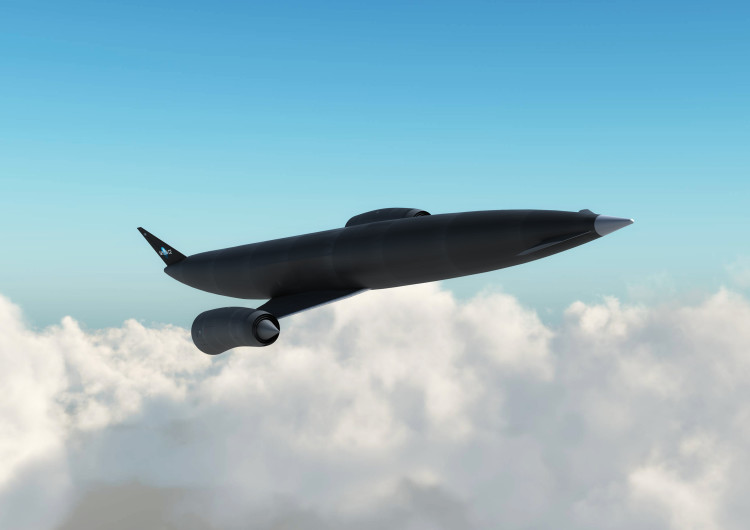In 2003, the space shuttle Columbia met its doom on a catastrophic re-entry through the earth’s atmosphere. After losing one of its ceramic composite tiles on liftoff the week before, the 1,500 degree heat penetrated the ship and destroyed it. The tiles are essential for any space-faring vessel’s protection, but related materials are being installed into space’s next generation of vehicles. Their protection against corrosion and extreme heat, plus their light weight, is not just lightening the load for new satellites, but also technology for mass consumption.
TISICS, an early incubatee at the Surrey Space Incubator in Guildford, England, is one of a handful of startups cornering the industry. They have developed two core products: pressure vessels with terrestrial and extraterrestrial applications, and high-performance struts with an eye toward aerospace and robotic uses. Specifically, the develop ceramic fiber reinforcement (a.k.a. ceramic/metal matrix composite), which creates lighter metallic materials and has an impact in industries such as aerospace, automotive, and energy, among others. The light weight reduces the cost of shipping (with space, rocket-shipping), and prevents corrosion.
They mainly work on composites using aluminum and titanium, spinning the space-age metals into consumer materials like cars. “We sell our silicon carbide fibre as a standard product although this is a specialist and limited market,” says Stephen Kyle-Henney, co-founder and managing director at TISICS. “We have a patented technology for an aircraft brake component which we aim to develop to product level over the next 2 to 3 years.”
Kyle-Henney is a veteran with a startup mentality. He started his career at the BP Research Center in 1988, before going on to work on early designs for a number of other spaceplanes that are a prelude to some of the projects TISICS has its metallic hands in. Since 2000, he has been focused on business development and technology transfer.
They have gotten various kinds of funding in the last few years: These include a €2.5 million contract from the European Space Agency (ESA) to build titanium components in conjunction with Surrey-based Thinklaser, and a grant worth more than £260,000 from Innovate UK (another £218,000 when combined with what their partner Thinklaser got for the same project) to streamline production of high-strength aluminum tanks. They’ve also gotten funding from SETSquared and SEEDA and worked with both Airbus and the UK Space Agen
The material is ideal for cars given its inherent protection against combustion. There is some possibility of applying the material to steam turbines, he says, but the big opportunities right now are in underwater drilling equipment for consortia looking for gas and oil.
“When we have sufficient capacity the technology will have applications for deep water sub-sea oil and gas production as lighter parts are easier to install with remote operated vehicles and the corrosion resistance will help long life sea-bed systems,” Kyle-Henney notes.
Space tends to employ fiber-reinforced aluminum for support struts or platform structures, but particularly to accommodate new chemical propellants that gas pressure systems and titanium aren’t suitable for, says Kyle-Henney. Conversely, they also disintegrate more easily in extreme heat, meaning it’s a better material for retiring satellites that engineers would rather burn up on reentry than risk hitting objects or people on the ground. TISICS purports its aluminum composites are three or four times as strong as conventional aluminum alloys.
The big project the company has been associated with is Reaction Engines’ Skylon spaceplane. One of the more advanced and sleekest designs out there for a reusable space-faring machine, it isn’t scheduled to be test-flown until 2025.
“Fibre reinforced titanium composite tubes are part of the design for the main truss structure fuselage as well as being considered for other systems. Space planes have very tight weight budgets to ensure maximum payload,” Kyle-Henney explains.
The company was formed in the metal filings of QinetiQ’s 2006 IPO, which saw them abandon their reinforced metal composite business. As part of a management buyout, the newly formed TISICS proposed a management buyout (MBO) that gave them four key staff members from the old company, helping to reconstitute fiber production within a couple of years, with the composite business working off old metal stocks until then.
TISICS held on in Surrey with the cross-university incubation network SETSquared back in 2010 before becoming one of the first companies in the Surrey Space Incubator. The incubator gave them about £15,000 in seed funding that helped fund a joint project with Surrey Satellite Technology (SSTL) for the U.K.’s TechDemoSat-1 project, a satellite developed by SSTL intended for testing new space technologies. While the initial fuel tanks didn’t exactly work out after initial testing, the experience helped accelerate the company into a new phase. From there, they worked with Airbus and won their contract with ESA.
“It is difficult to describe all of the benefits of the networking activity supported by the Incubator,” Kyle-Henney told Geektime. Their “£15,000 seed fund grant has resulted in close to £750,000 of income to date and a further £1 million to £2 million directly or indirectly related contracts is incredible support for an SME like TISICS.”
TISICS hopes its technology will find its home again with the new satellite age, which will seek stronger yet-as-light materials to keep new constellations of CubeSats in orbit for longer. For Kyle-Henney, the possibilities for TISICS’ not-so-heavy metal tech are endless.
“This increased use of space means a huge opportunity for companies able to remove debris from space from end of life spacecraft and rockets. Could the space station be towed to the moon to provide 400 tonnes of material for a future moon base? Is this cheaper than launching new material?”
TISICS was founded by Dr. Stephen Kyle-Henney and four members of the metal matrix composite team at QinetiQ in 2006. The company has 14 full-time employees. TISICS has roughly £1.2 million in equity investments from the management team and a Norwegian energy consultancy going back to 2005.












